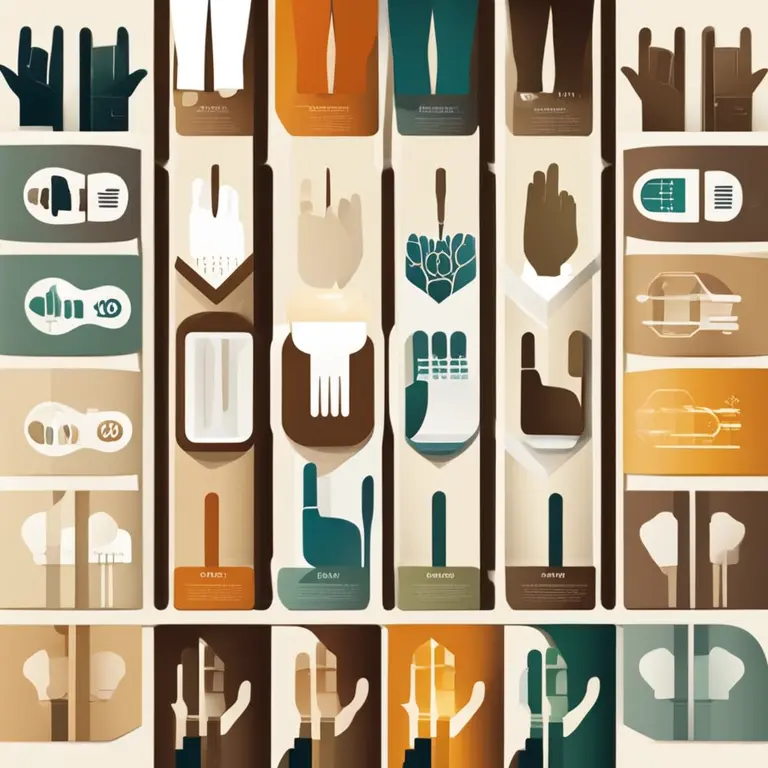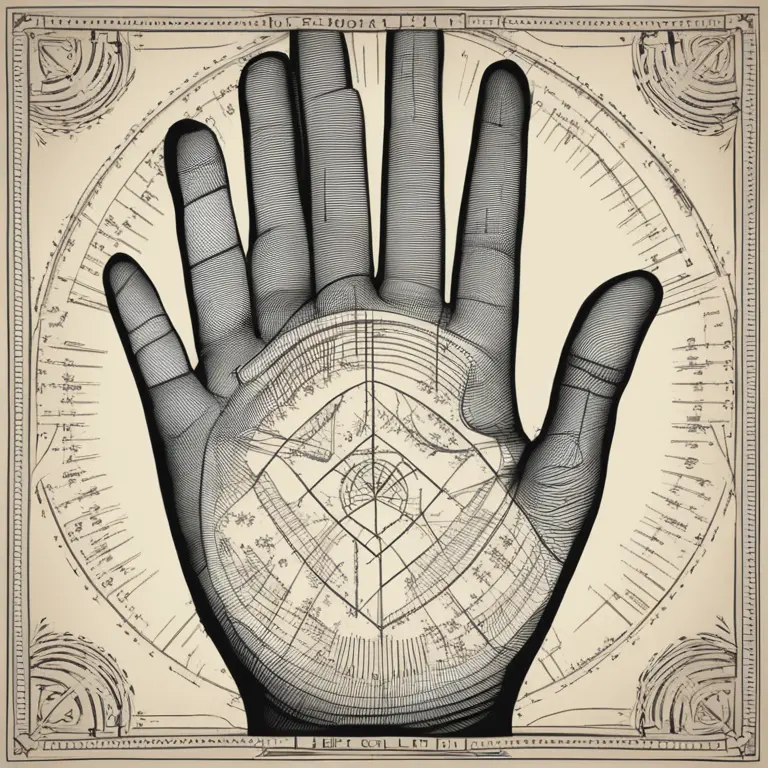
The Essence of Palmistry Revealed
Discover the timeless wisdom of palmistry in this insightful article, designed to guide the beginner's journey into reading the secrets held within our hands.
article by Nora Pennington
Introduction to Palmistry
Palmistry is an ancient practice that can be traced back to various cultural traditions, including India, China, and Greece. It revolves around the study of the palm, considering the intricate lines, shapes, and mounts as indications of one's personality and potential life course. As we progress into the digital era, palmistry remains a source of fascination for many, with modern tools and apps making it more accessible than ever. In this article, we will delve into the basic elements of palm reading, providing a foundation for all who are drawn to this mystical art form.

Understanding the Major Lines
The primary step in palmistry is to identify the major lines on the palm: the heart line, head line, and life line. The heart line, arching across the upper palm, reflects emotional stability and romantic perspectives. The head line, running below it, offers insights into intellectual tendencies and mental attitudes. Lastly, the life line, encircling the base of the thumb, speaks to vitality and life changes. These lines can vary greatly in length, depth, and clarity, each variation imparting unique significance as per contemporary palmistry interpretations.

Significance of Hand Shapes
In addition to the lines, the shape of the hand and fingers presents another layer of insight. Hand shapes are categorized into elemental types—Earth, Water, Air, and Fire—each associated with distinct personality traits. Earth hands are identified by their broad, square palms, indicative of practical and responsible nature. Water hands feature long palms with long fingers, suggesting sensitivity and intuition. Air hands have square or rectangular palms with long fingers, reflective of intellectual and communicative qualities. Fire hands boast a square or rectangular palm with short fingers, denoting impulsiveness and enthusiasm. Recognizing these features opens the door to a deeper understanding of innate dispositions.

Mounts and Their Meaning
Mounts, the fleshy pads beneath the fingers and palm, are also central to palm readings. Named after celestial bodies, such as Venus, Mars, and Jupiter, each mount corresponds with different aspects of our persona. The prominence and development of these mounts offer clues about individual strengths and weaknesses. For instance, a well-defined Mount of Venus near the thumb suggests a person rich in love and passion, while a pronounced Mount of Jupiter under the index finger may indicate leadership qualities. Observing these mounts and their interconnections with the lines enriches the narrative that palms unfold.

Marks and Symbols
While lines and mounts are well-known elements of palmistry, various marks and symbols can appear on the palms as well. Stars, crosses, and grids each possess their own meanings and can add layers to a reading. For example, a star on the heart line might hint at significant emotional experiences, whereas a cross could represent a pivotal life decision. It's essential to approach these symbols within the broader context of a palm reading, ensuring a comprehensive view. Marks and symbols in palmistry continue to be a subject of study and debate among modern practitioners.
Evolving Practice of Palmistry
The integration of technology into the practice of palmistry is one of the most significant advancements in recent times. High-resolution scanners and sophisticated software analyze palms more accurately than ever, allowing both enthusiasts and professional palmists to conduct readings from afar. Most importantly, while the fundamentals of palmistry have remained consistent, the interpretations evolve with societal shifts, ensuring that its wisdom maintains relevance well into 2024 and beyond.
Starting Your Palmistry Journey
Embarking on the palmistry path requires patience, as it is both an art and a science. A tip for beginners is to start by reading their own palms, noting the various lines, mounts, and shapes. From there, consulting comprehensive guides or taking part in workshops can further one's knowledge and skills. Given the universal nature of the hands we read, palmistry indeed is a discipline "for all," crossing cultural and chronological boundaries to tap into the human experience itself.
Published: 1/11/2024
Modified: 1/12/2024
More predictions
Come back here soon to learn more about yourself and your future


Can Palmistry Predict Your Path Incorrectly?
Delving into the accuracy of palm readings, this article examines whether palmistry can lead to incorrect predictions about one's life and destiny.


The Possibility of Palmistry in Cancer Detection
Examining the claims that palmistry holds any potential in identifying the risk of cancer: a deep dive into the world of mysticism and medicine.


The Efficacy of Palmistry: Real Insight or Fancy?
Delve into the validity of palmistry as a form of divination. Is there a truth behind the lines on our palms, or is it just a charming fancy?